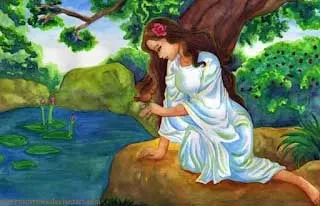A Forgotten Mariang Makiling Legend Set in Balayan, Batangas
Even in the present day, one still hears once in a while stories of people who had gone on treks up Mount Makiling in the Province of Laguna and fell ill afterwards, the illness attributed to these same people allegedly having done something to displease the guardian of the mountain, the “diwata” or fairy called Mariang Makiling.
Wikipedia describes Mariang Makiling as:
“…the guardian spirit of the mountain, responsible for protecting its bounty and thus, is also a benefactor for the townspeople who depend on the mountain's resources1”
Although part of the mountain is in the northern Batangas city of Santo Tomas, by and large, stories about Mariang Makiling are set in the province of Laguna. In fact, Grace Odal-Devora, a University of the Philippines-Manila professor who studies local myths and legends, had this to say about the legendary character:
“In Philippine folklore, Mariang Makiling was the goddess of Mount Makiling, in Laguna province. This beautiful guardian of the forests and their flora and fauna was very friendly to human beings. She showed herself to good-hearted people, giving them gold and other precious items, as well as blessing them with prosperity and safety. However, there came a time when humans abused her kindness. They took her blessings for granted, and neglected to care for her mountain domain. So she vanished from the sight of humans, and humans lost a gift-giving goddess, a wealth-endower and the sense of beautiful magic pervading the forest air2.”
“Much interested in folktales, that the story of Mariang Makiling who they said dwelt in the Sampiro mountain is up to this day, still known even by the younger generations. Mariang Makiling, they said, was a very charming woman gifted with a supernatural power, dwelt in a part of the mountain of Duhatan. An enchanted maiden was she that she could do things common people never could do. She never rejected requests but a time when an inhabitant did never comply with is commitment that Makiling abandoned the place. No trace of her could now be heard. Often, the people would say, “Oh Mariang Makiling.” Oh! Motherly maiden you abandoned us3.”
This same folkloric story was expounded upon by another item contained in the historical data for the barrio of San Piro, also in Balayan, which was somewhat similar to Odal-Devera’s description of Maria Makiling. According to the story, “Doña” Maria was a fairy who interacted with people and granted them their personal needs, until she felt abused and disappeared.
While Odal-Devera’s story specifically described the people’s abuse as “neglected to care for her mountain domain,” the San Piro story failed to specify what the abuse was to Doña Maria’s “kindness and generosity.” We are led to conclude, however, that Doña Maria and Maria Makiling are one and the same because the latter story conjectured that Doña Maria “probably transferred her residence to Mt. Makiling in Laguna.”
The underlying premise is, of course, that Maria Makiling was, as far as the people of Balayan of yore were concerned, originally from that very same town. This is something that many people of the present have probably never even heard of.
Here is the complete text of the Doña Maria story from the historical data of the barrio of San Piro.
“San Piro is not only rich in resources and history. It has also a legend beautiful as it is glamorous. This is about the legend of Doña Maria, the fairy of the peak that now bears her name. It is said that on moonlit nights, she would be seen tripping down the slope or frolicking on the ravines, while the melodious strains of her silvery beautiful voice floats incessantly on the languid air. She is known to be a lady of exotic beauty. In spite of her being a supernatural being, she often mingled with the people and had grown fond of them. She ministered to their personal needs – gave alms to the poor, tended the sick, and even lent her precious jewels, furniture, and beautiful clothing to people down the peak when they had some grand affairs such as fiestas, weddings, and the like. But it seemed that some people abused her kindness and generosity so that in her displeasure, she abandoned the peak of her abode and was seen no more. Only the imprint of her right foot was left at Doña Maria’s Peak, as souvenir to the ungrateful people she once loved. The other footprint, so the story says, may be found in Mt. Batulaw. Then, she probably transferred her residence to Mt. Makiling in Laguna. We have heard of Mariang Makiling. As to where she came from, nobody knows, and now Doña Maria as it was, was but a legend receding backward and backward to the background of doom and oblivion save for the fact that every now and then, in silent moonlit nights, the old folks of San Piro and Dalig would retell the story to their children, who in turn will, perhaps, hand it down to posterity4.”
2 “Healing the Earth Through Myths and Dance,” TUNZA, The UNEP Magazine for Youth, Volume 8 Number 4.
3 “History and Cultural Life of the Barrio, Duhatan,” online at the National Library of the Philippines Digital Collections.
4 “History and Cultural Life of the Barrio San Piro,” online at the National Library of the Philippines Digital Collections.

